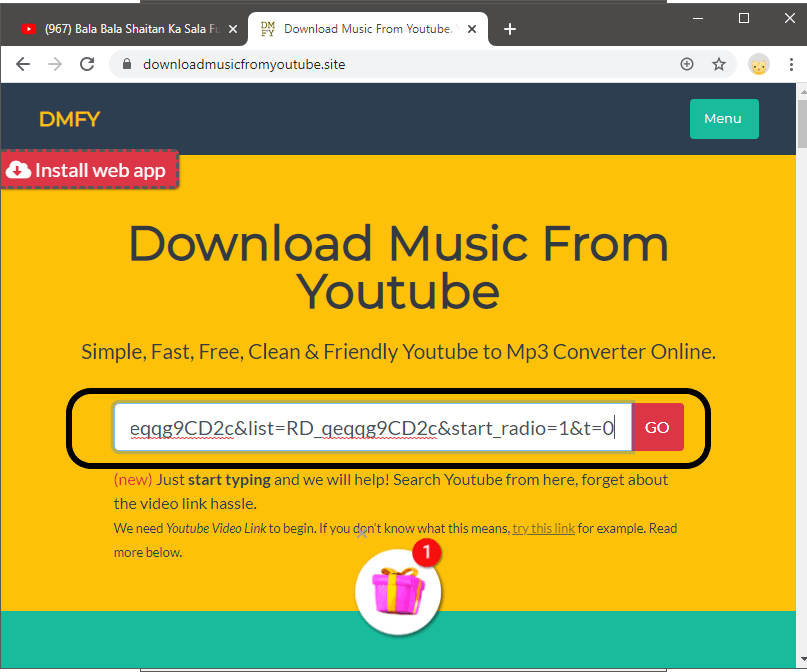

- #HOW TO CONVERT A YOUTUBE VIDEO TO MP3 USING JAVA HOW TO#
- #HOW TO CONVERT A YOUTUBE VIDEO TO MP3 USING JAVA SOFTWARE#
- #HOW TO CONVERT A YOUTUBE VIDEO TO MP3 USING JAVA DOWNLOAD#
How to Convert a YouTube Video to Text Using MiniTool uTube Downloader? Use online YouTube video to text converter.Convert a YouTube video to text using MiniTool uTube Downloader.To help you choose a suitable method, we will introduce these methods in this article. Which one is the best choice? It depends on the YouTube video you want to convert. So, there is more than one method to convert a YouTube video to text. This method only works when the YouTube video has sound.
#HOW TO CONVERT A YOUTUBE VIDEO TO MP3 USING JAVA SOFTWARE#
If so, how to transcribe/convert a YouTube video text? You can use special speech recognition software like Google Docs to listen to the video or audio and automatically convert the speech content to text. There is another situation: the YouTube video has no subtitles. An online YouTube video to text converter is also a choice.īesides, you can open a transcript of a YouTube video and copy & paste it into a text file.
#HOW TO CONVERT A YOUTUBE VIDEO TO MP3 USING JAVA DOWNLOAD#
Other users can’t directly get it.īut you can use a third-party YouTube videos downloader like MiniTool uTube Downloader to download the subtitle of a YouTube video and then transfer the downloaded subtitle to text. The YouTube video subtitle is added by the video uploader. The subtitle of a YouTube video is also called a video transcription, the textual representation of the spoken content in the video. Usually, a YouTube video is embedded with a subtitle.

However, is it possible to transcribe a YouTube video to text? For some YouTube videos, users not only want to watch them but also want to convert them to text for personal use. Many people like to watch videos using it. YouTube is a well-known online video sharing and social media platform owned by Google. If you wish to work at such wrapper by yourself but don't know how, ask a question, I'll give you the basic ideas (using P/Invoke or C++/CLI "mixed-mode" project).Want to Convert/Transcribe a YouTube Video to Text? At the same time, you can find appropriate wrapper. NET and without C++/CLI, it can be more complex as it would require using P/Invoke. You can expose just the functionality you need, in managed "ref" classes then you can use these classes referencing the resulting module as a usual. NET functionality: you can still use the unmanaged library, using it in your C++/CLI mixed-mode (managed + unmanaged) project. It's apparently possible with C++, as the library is written on C. Optionally, you can embed is as a library. I could be used just by running the available utility (FFmpeg.exe), programmatically or not, using command-line interface. This is the best library and utility set I ever knew. This is open-source FFMpeg or libav it uses. I'll just recommend you the most reliable and universal tool which will cover nearly all problems, just one of the possible solutions, but one of the best one. Let's not discuss it, because you can do this investigation by yourself examine your existing files and find out what are they, test the machinery you want to use and find out what is it compatible with. So, you first need to decide what you really need to achieve. (By my estimate, typical car audio features on new cars are typically obsolete by some 10+ years it's hard to explain, but probably the reasons are purely cultural factors, such as massive ignorance :-).) However, if you want to prepare audio for your car audio unit, you may need MP3 or WMA. I would also like to note that MP3 audio format is pretty much obsolete, and the most used ones are also based on MPEG-4 (such as AAC). Files are just the media containers which can support some subset of different kinds of streams, supported by different kinds of codecs (perhaps, Matroska media container standard is the only one which is supposed to support nearly everything, it's sometimes referred as to the "king of containers"). First of all, there are no just MPEG files. The are too many different variations related to the concept of MPEG-4. Next wrong item is: you assume that there is such a definitive thing as "MP4". The term MPEG itself covers both audio and video. So, you can first extract some streams for further processing. First, video is not converted to audio (what it would even possibly mean?) It's just video files contain several streams, and some of them are video, and some are audio, and you can have some different kinds of streams (subtitles, for example).


 0 kommentar(er)
0 kommentar(er)
